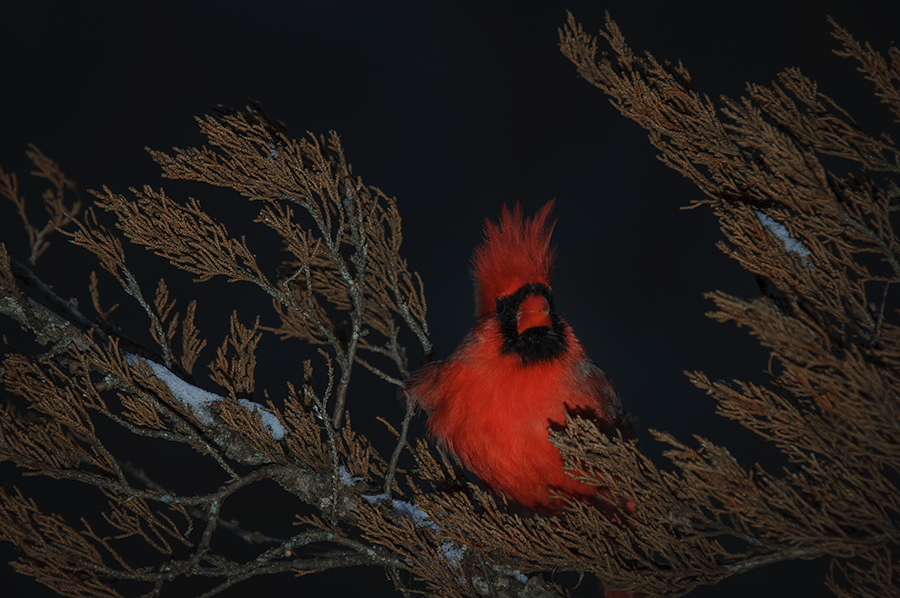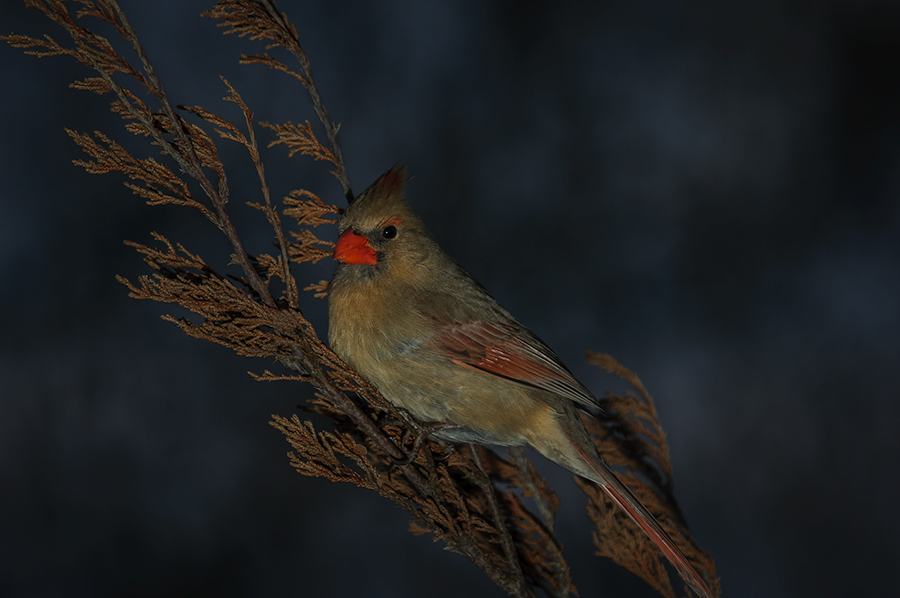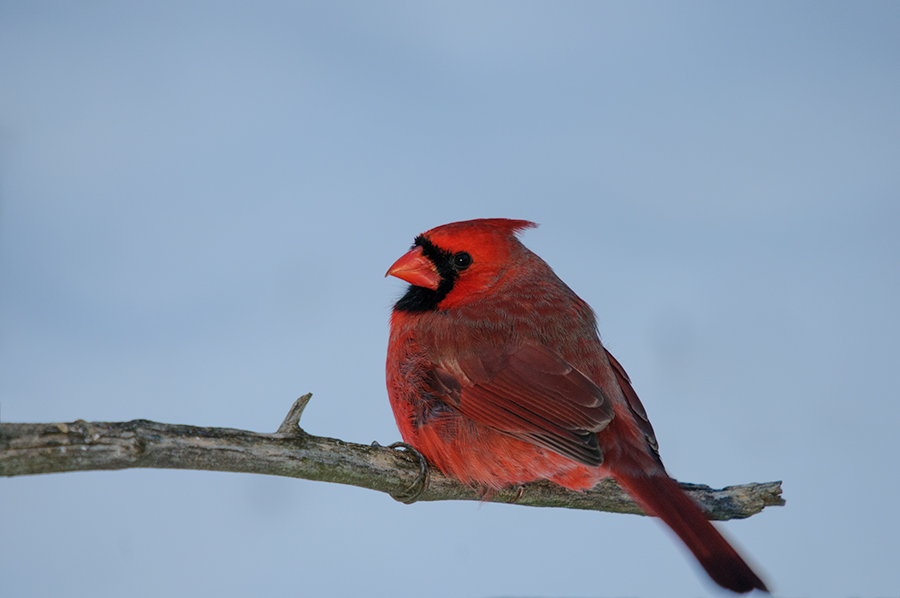 Today we got reminded that we are still in the middle of winter. Lots of snow fell during the morning until noon. Well, I call it ideal weather for bird photography! The snow drives the birds to the feeders and water sources that we provide for our feathered friends. Snow flakes create always a nice dynamic in the photo and help to tell the story about survival in harsh weather conditions and this is why I like this kind of weather for shooting birds around the house.
Today we got reminded that we are still in the middle of winter. Lots of snow fell during the morning until noon. Well, I call it ideal weather for bird photography! The snow drives the birds to the feeders and water sources that we provide for our feathered friends. Snow flakes create always a nice dynamic in the photo and help to tell the story about survival in harsh weather conditions and this is why I like this kind of weather for shooting birds around the house.

The lack of light (strong overcast) was compensated by using the Nikon SB600 speed light and my self-made soft box. If you like to see how that light enhancer looks like, click on the link HERE , and one of my older posts will open in a new window. The softened light from the flash brings out the colors in the birds. While this works well you still don’t want too much reflection of the flash in the frame. I set the camera to manual mode (today I used most of the time 1/250s, f/8) and also reduce the output of the flash by -2/3. The shooting distance was about 3 meters (10 feet). After a few test shots it is not difficult to find the settings that you may like for your photo. I prefer to use the manual mode for this kind of shooting because it gives me consistent results over a period of time. If the light changes on a larger scale I change the settings of the flash light accordingly.

If you like to try something similar at your bird feeders but do not have a soft box, just take a white napkin and put it over your flash. This is not perfect (neither is my self-made soft box!) but it will give you some results you may like much better than just from the naked speed light. It is a starting point, give it a try!

Post processing for these images was very simple. I cloned out a few snow flakes that reflected the flash light a little too much. Other than that, just the usual tweaks in the basic menu of Adobe Lightroom, RAW sharpening, a little noise reduction, and finally some Highpass sharpening in Photoshop of the critical parts (eyes, maybe feet or some feathers). After three minutes the photo is ready to be saved as a jpeg file as you can see it here in the blog.
I hope my little description of today’s bird shooting may encourage you to try something similar at your own bird feeders, or even better out in the woods. Stay warm and enjoy the rest of your weekend!









 Today we got reminded that we are still in the middle of winter. Lots of snow fell during the morning until noon. Well, I call it ideal weather for bird photography! The snow drives the birds to the feeders and water sources that we provide for our feathered friends. Snow flakes create always a nice dynamic in the photo and help to tell the story about survival in harsh weather conditions and this is why I like this kind of weather for shooting birds around the house.
Today we got reminded that we are still in the middle of winter. Lots of snow fell during the morning until noon. Well, I call it ideal weather for bird photography! The snow drives the birds to the feeders and water sources that we provide for our feathered friends. Snow flakes create always a nice dynamic in the photo and help to tell the story about survival in harsh weather conditions and this is why I like this kind of weather for shooting birds around the house.








